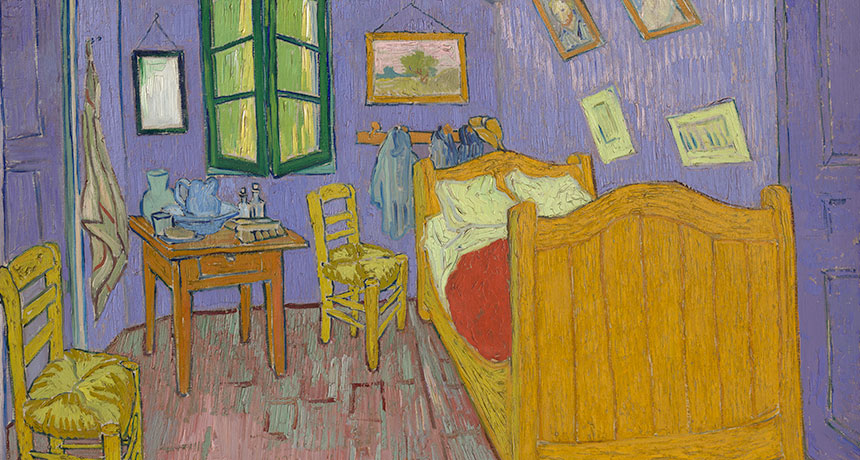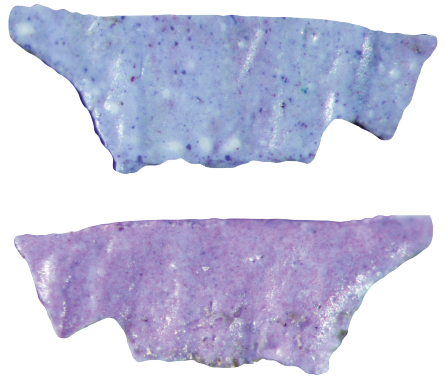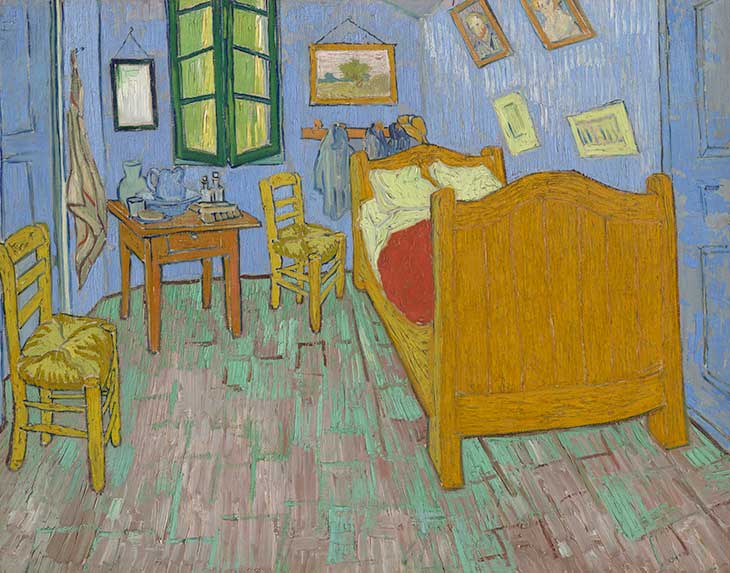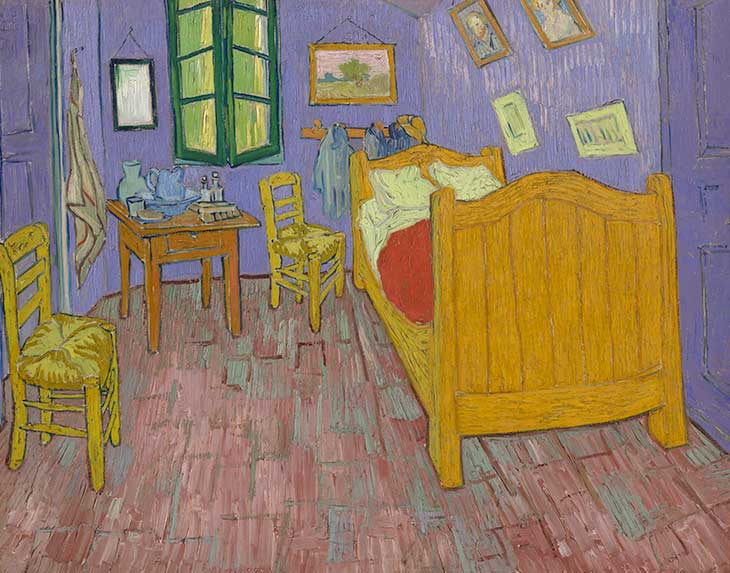Science gives clues to ‘The Bedroom’ as van Gogh painted it
Recolorization on display at Art Institute of Chicago restores iconic painting's original colors

A NEW VIEW Conservation science, color theory and art history came together to produce this recolorization of Vincent van Gogh's The Bedroom.
Roy S. Berns and Brittany Cox/Munsell Color Science Laboratory/Rochester Inst. of Tech., Kelly Keegan/Art Inst. of Chicago
Though science and art are vastly different disciplines, one can shed light on the other. That connection is on display in a recolorized version (above) of Vincent van Gogh’s The Bedroom.
The colors in the original work, a version painted in 1889, have faded over time. For an exhibit on display through May 10 at the Art Institute of Chicago, conservation scientist Francesca Casadio and colleagues conducted a number of tests to reveal the pigments van Gogh used.
A macro X-ray fluorescence scanner gave scientists a broad picture of the elements and minerals in the paint. A technique called surface-enhanced Raman spectroscopy — which uses laser light to make molecules vibrate in a way that betrays their identity — gave clues to other pigments in the paint.

Finally, a microscopic sample taken from the painting (right) was especially revealing: The underside divulged the original purple color of the walls.
Casadio and colleagues then worked with a color theorist to simulate van Gogh’s paints, and with conservators and curators to create a digital version of the original painting that brings back “the emotional landscape of van Gogh,” Casadio says. “It’s a visualization that is not arbitrary; it’s informed by the science. But there’s still a process where you have to have the interpretive eye of those who know the artist.”
The recolorization is on display through May 10 at the Art Institute of Chicago in an exhibit that for the first time brings together the three versions of The Bedroom that van Gogh painted in 1888 and 1889.
Before and after
The original version of “The Bedroom” (left) has faded over time. The recolorized version (right) returns the pale violet hue of the walls and the redness in the floor tiles.









